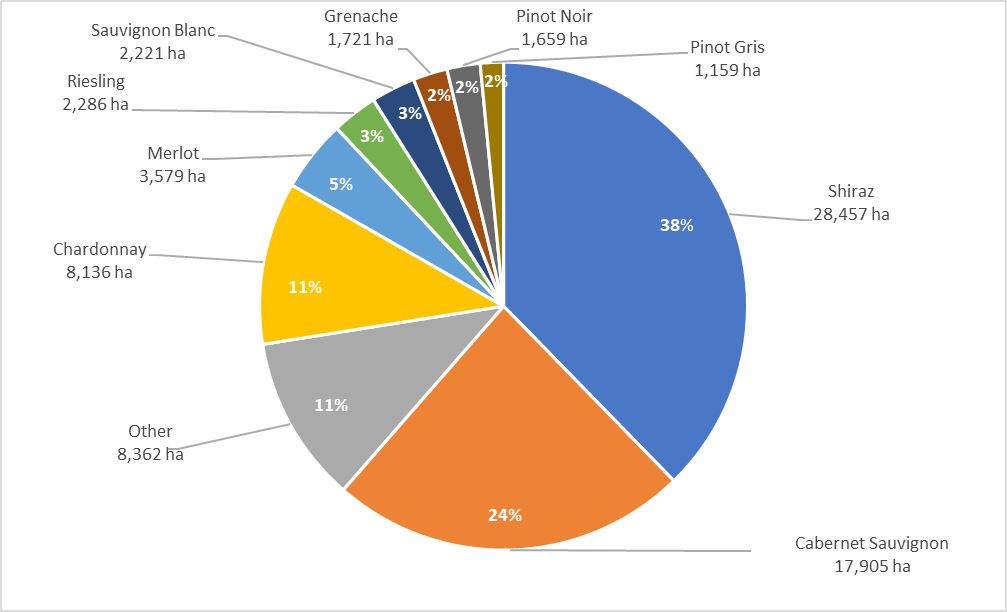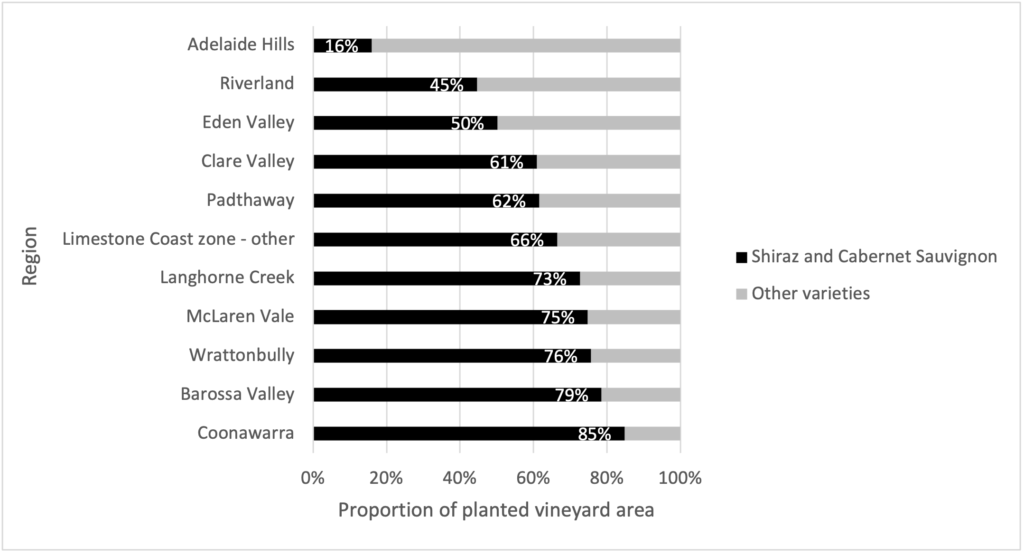With a lot of talk around the difficulty of selling red winegrapes, South Australia’s reliance on the sale of red wine is particularly evident when looking at the state’s vineyard plantings.
The state’s top two varieties by planted area are Shiraz (28,457 hectares) and Cabernet Sauvignon (17,905 hectares), collectively comprising 61% of the state’s planted area (Figure 1).
Some wine regions are far more vulnerable than others to a downturn in these two varieties. For wine regions with more than 1,000 hectares of vine plantings, we can see several distinct groupings in reliance on these varieties (Figure 2):
- Highly reliant regions on Shiraz and Cabernet with those varieties comprising more than 70% of regional plantings include Coonawarra, Barossa Valley, Wrattonbully, McLaren Vale and Langhorne Creek.
- Regions with a moderately high reliance on Shiraz and Cabernet with those varieties comprising between 51-70% of regional plantings include Limestone Coast other, Padthaway and Clare Valley.
- Moderately reliant regions on Shiraz and Cabernet with those varieties comprising between 40-50% of regional plantings include Eden Valley and Riverland.
- Adelaide Hills has a low reliance on Shiraz and Cabernet, with those varieties accounting for only 16% of the planted area in the region.
The top three varieties by planted area in the state – Shiraz, Cabernet Sauvignon and Chardonnay, account for 72% of the total planted vineyard area, which remains unchanged from the previous two years (Figure 1).
Of the state’s total 75,485 hectares of vineyards as at 30 April 2023, the top nine grape varieties (all winegrape varieties) accounted for 89% of the state’s planted area (Figure 1).

